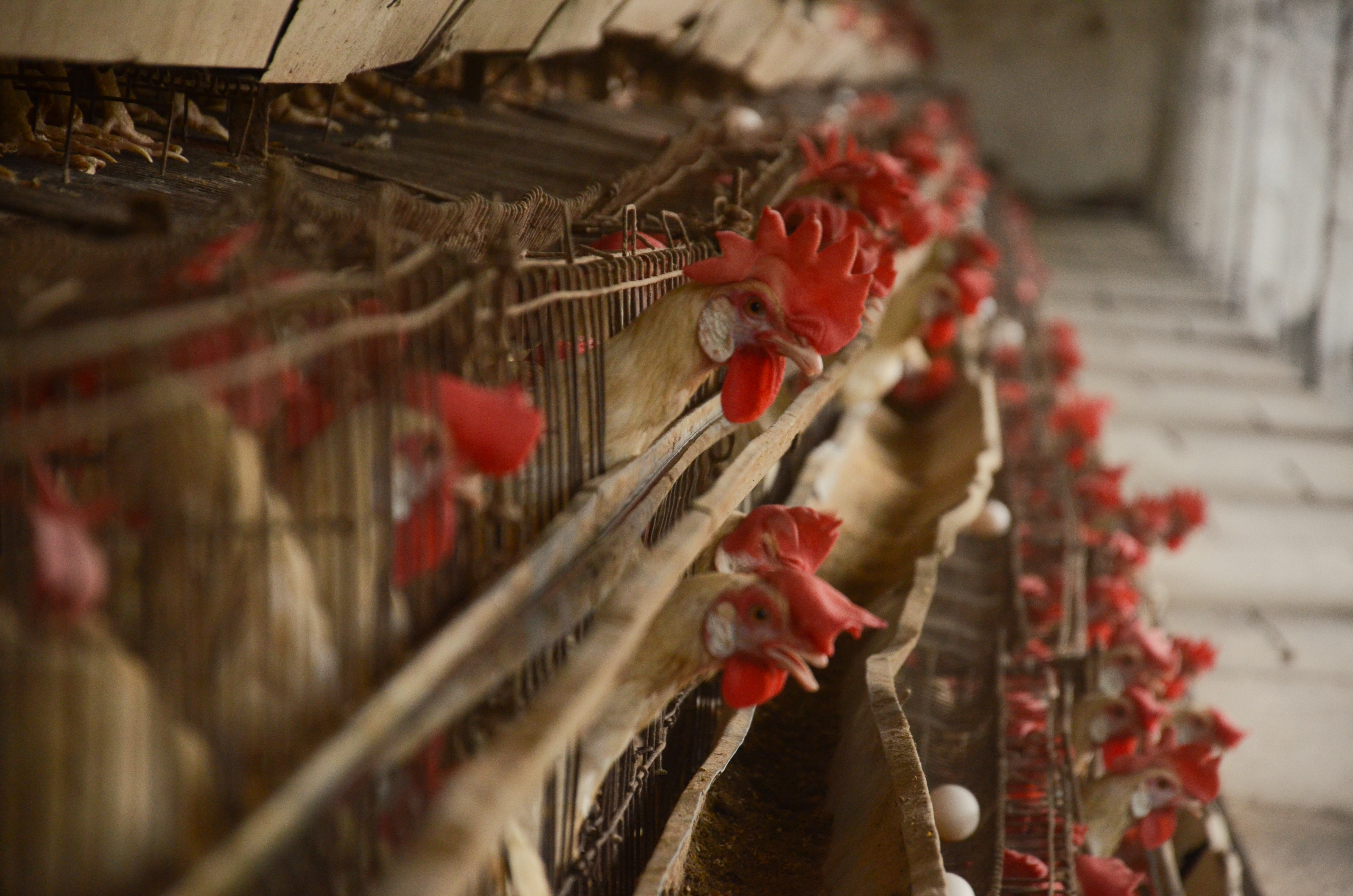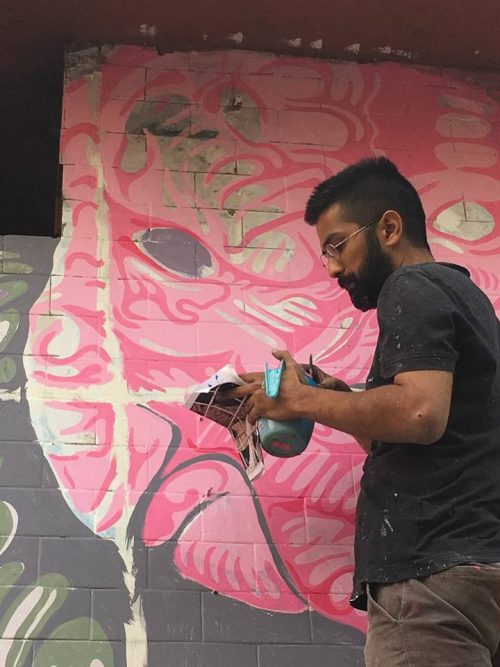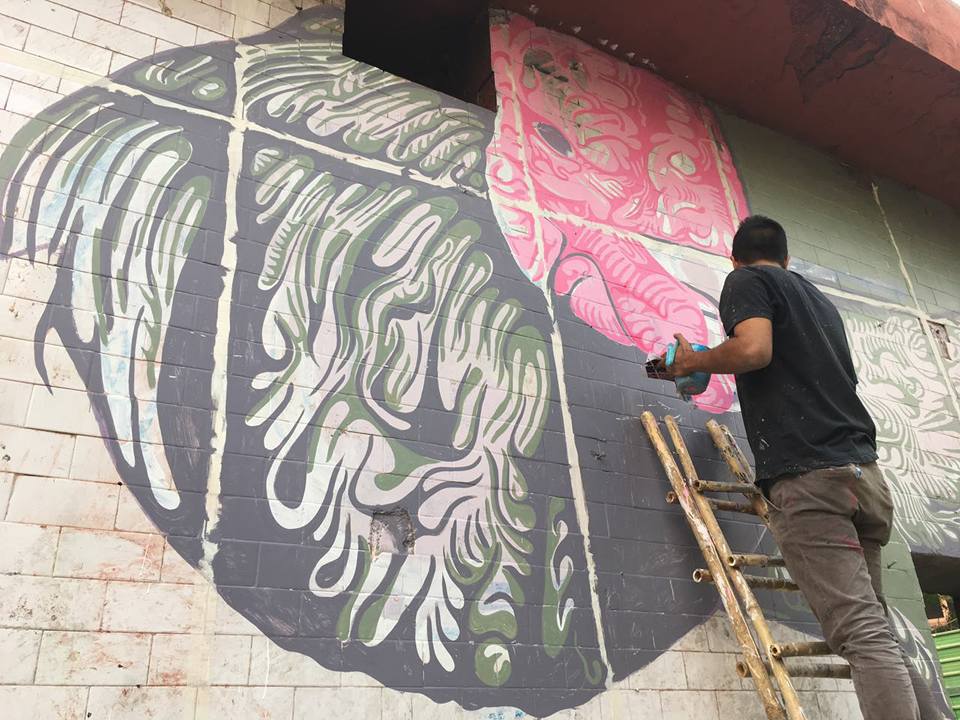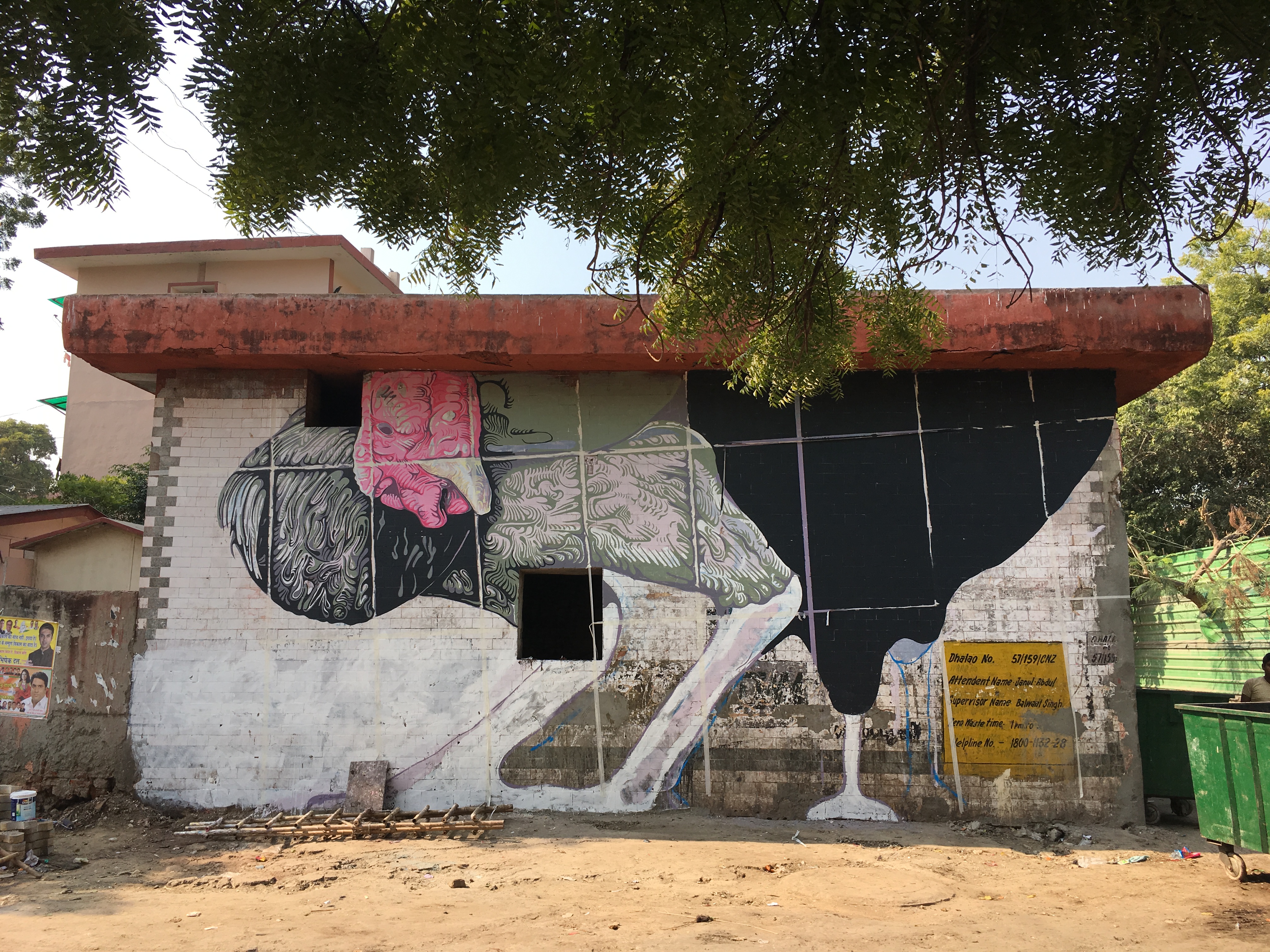TBI Blogs: How Amitabh Kumar Is Raising Awareness About Animal Cruelty in India Through a Gigantic Mural
Art can be a great driver for social change. Encapsulating that sentiment, mural artist Amitabh Kumar talks about creating a mural that captures the suffering of battery hens in India.

Art can be a great driver for social change. Encapsulating that sentiment, mural artist Amitabh Kumar talks about creating a mural that captures the suffering of battery hens in India.
Last month, artist Amitabh Kumar returned from painting a mural on the boundary wall of a dump yard in Delhi. At 20 feet x 30 feet, the arresting image of a confined hen is part of a larger campaign to raise awareness about the way eggs are produced commercially, with hens confined to cages so small that they can’t even stretch their wings.
Q: Why is this an issue you feel strongly about?
Amitabh: I’ve been heavily influenced by reading the philosopher John Gray, who challenges the way that we as humans assume that we are the superior species. This prompted further thought about this issue, and seeing a video of the conditions for battery hens really shocked me. The conditions that these animals go through are just plain cruel. In that sense, I found agency in what I was doing, and in being part of this larger campaign.

Q: Tell us about the process of painting this mural.
A: I draw freehand, and when you’re drawing at that scale, it takes time to get the anatomy right—a day and a half, in this case. For this, I used a brush on the end of an eight-foot bamboo stick, for which I had help from my friend, the artist Siddhartha Kararwal. After that, I used water-based enamel paint, as we were working on tiles. On the last day of execution, I also had help from Anpu Varkey, one of the more prominent Indian artists in the mural scene.
Q: How important was selecting the site?
A: The architecture in that place was perfect. I needed a certain scale, but I also wanted it to be very claustrophobic. The solid roof at the top gives the sense of something pressing down on you. You don’t quite see the full form of the chicken, so it’s almost like it’s being crushed.
The overpowering, feral nature of a dump yard was also fitting in terms of what I was trying to say about the conditions hens are kept in.
It wasn’t an easy process though, as there was some degree of wariness about working with the politics of what I wanted to create. In fact, the first site fell through, so when I landed in Delhi to begin the work, there was no wall lined up!
A friend put me in touch with Friendicoes, a veterinary hospital with a boundary wall. But it was small, and not really what I was looking for. But there I met a lady named Mrs. Duggal, who was able to put me in touch with Mr. Abhishek Garg, the area’s local corporator. I met him that evening. The next morning, his representative took me around to see potential sites, and by the afternoon, I’d cleaned the wall up, bought paint, and began.
Q: What was it like to paint in a dump yard?
A: It was interesting. People come there with their faces covered to dump trash. Usually, they’d want to leave as soon as possible. Despite this, what was really noticeable was that they were willing to linger and ask me questions. Some even came back.
Q: What reactions have you had?
A: It took three and a half days total, and people engaged with it throughout the process. Because I draw layer by layer, at first, the questions and comments were more general, asking me why I was painting, or telling me that it was a great initiative. As I progressed, people started to engage more with the image, asking questions about what I was creating.
At one stage, there was a lot of guesswork going on as to what the creature was. A lion? A dinosaur? Someone even asked if it was Indira Gandhi! Children from a nearby school would chat about whose guess was right. But by the last day everyone got it — it became clear that this was a bird. That was the point at which conversations started about why I had painted a bird like this.
Q: What do you hope people will take away from the mural?
A: What guided me was the idea of putting the viewer into the same position as the hen. The idea was to make a beast, so that you are overwhelmed with some of the same feelings that the chicken must feel.
I had to tone the menacing, fearful aspect down a bit, considering the location, and make it into an image that people could actually look at and talk about.
It’s estimated that approximately 18 crore egg-laying hens live in battery cages in India. Each bird has less space than a single A4 piece of paper. In 2012, the Animal Welfare Board of India passed a resolution, recommending that battery cages for egg-laying hens be phased out by January 2017. However, the policy is yet to be adopted.
Join HSI/India’s ask to end battery cages, and sign the petition here.
Like this story? Or have something to share? Write to us: [email protected], or connect with us on Facebook and Twitter.
NEW: Click here to get positive news on WhatsApp!
If you found our stories insightful, informative, or even just enjoyable, we invite you to consider making a voluntary payment to support the work we do at The Better India. Your contribution helps us continue producing quality content that educates, inspires, and drives positive change.
Choose one of the payment options below for your contribution-
By paying for the stories you value, you directly contribute to sustaining our efforts focused on making a difference in the world. Together, let’s ensure that impactful stories continue to be told and shared, enriching lives and communities alike.
Thank you for your support. Here are some frequently asked questions you might find helpful to know why you are contributing?


This story made me
-
97
-
121
-
89
-
167
















